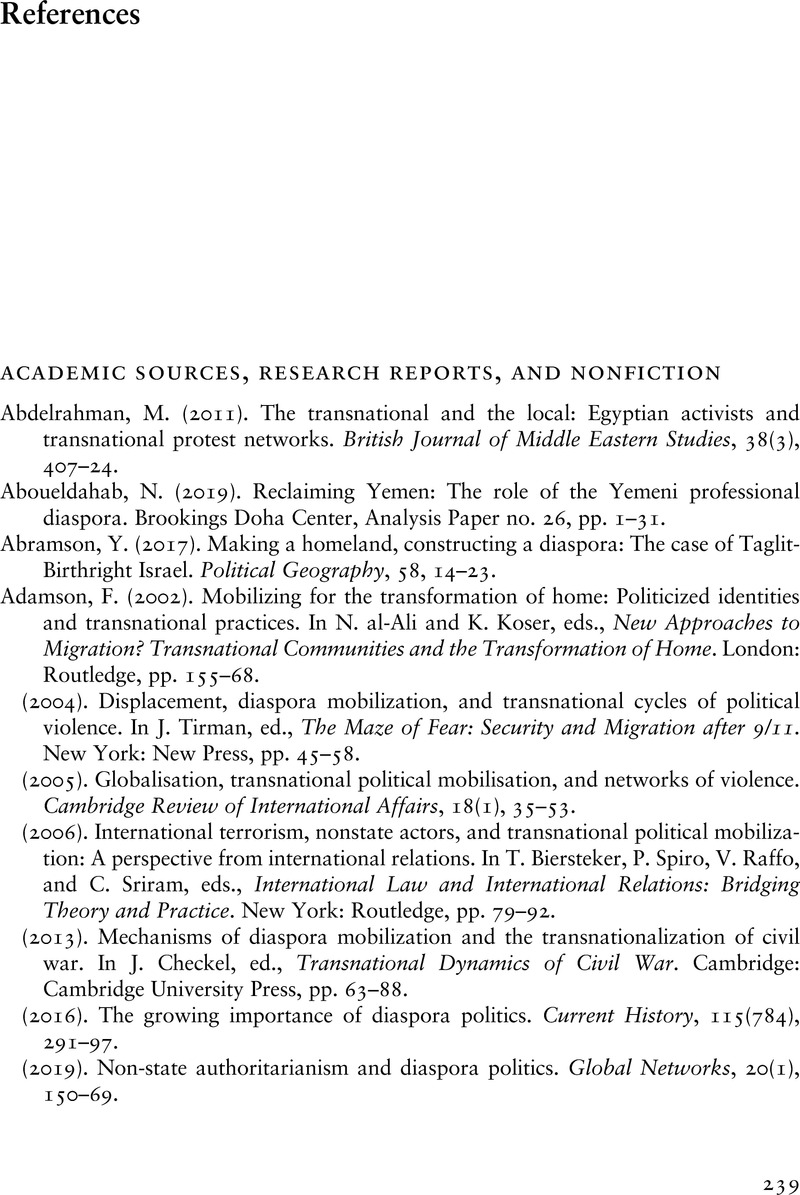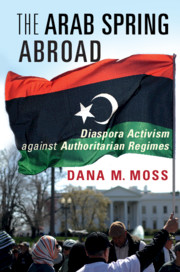Book contents
- The Arab Spring Abroad
- Cambridge Studies in Contentious Politics
- The Arab Spring Abroad
- Copyright page
- Contents
- Figures
- Tables
- Acknowledgments
- A Note on Transliteration
- Abbreviations
- Introduction
- 1 Diaspora Activism and the Dynamics of Voice
- 2 Exit from Authoritarianism
- 3 Silenced and Split
- 4 Coming Out and Coming Together
- 5 Voice for Rebellion and Relief
- 6 Converting Resources to the Cause
- 7 Gaining Geopolitical Support
- Conclusion
- Methodological Appendix
- References
- Index
- Series page
- References
References
- The Arab Spring Abroad
- Cambridge Studies in Contentious Politics
- The Arab Spring Abroad
- Copyright page
- Contents
- Figures
- Tables
- Acknowledgments
- A Note on Transliteration
- Abbreviations
- Introduction
- 1 Diaspora Activism and the Dynamics of Voice
- 2 Exit from Authoritarianism
- 3 Silenced and Split
- 4 Coming Out and Coming Together
- 5 Voice for Rebellion and Relief
- 6 Converting Resources to the Cause
- 7 Gaining Geopolitical Support
- Conclusion
- Methodological Appendix
- References
- Index
- Series page
- References
Summary

- Type
- Chapter
- Information
- The Arab Spring AbroadDiaspora Activism against Authoritarian Regimes, pp. 239 - 262Publisher: Cambridge University PressPrint publication year: 2021



